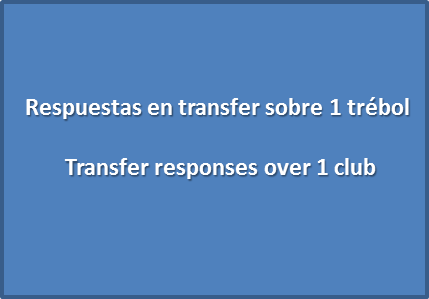Source: sieged.blogspot.com.ar
I like to show whether a hand is balanced or unbalanced at the first opportunity – it clearly benefits the bidding of the latter and simplifies auctions for the former, so I won’t bid two suits on a balanced hand (unless raising partner). To try to avoid missing a 4-4 major fit, a minimum responder shows a 4 card major even with 4 or more diamonds. Using this style, you miss the 4-4 spade fit when responder has both majors, and the 1 and 1
and 1 responses are much more frequent than 1
responses are much more frequent than 1 – a waste of bidding space. Much better is to have the cheapest responses, 1
– a waste of bidding space. Much better is to have the cheapest responses, 1 and 1
and 1 , assigned to hearts and spades, with 1S showing 5+diamonds and denying a 4 card major unless invitational or better opposite a weak NT. «Completing the transfer» to a major suit is used to show a minimum hand, either unbalanced with 3 card support or balanced with 2-3 card support, while a 1NT rebid shows a strong balanced hand.
, assigned to hearts and spades, with 1S showing 5+diamonds and denying a 4 card major unless invitational or better opposite a weak NT. «Completing the transfer» to a major suit is used to show a minimum hand, either unbalanced with 3 card support or balanced with 2-3 card support, while a 1NT rebid shows a strong balanced hand.
This is a fairly simple modification to a normal 5 card major structure, whatever the 1NT opening range – the only change necessary is to always open 1 with the strong balanced type. However, as usual, I prefer to make things more complicated…
with the strong balanced type. However, as usual, I prefer to make things more complicated…
I believe that showing which of your minors is longer on a balanced hand isn’t terribly useful – on a lot of hands, it will help the opponent’s defence more than it will our bidding. I prefer to put all of the balanced hands into the 1 opening, which frees up a 1NT rebid after opening 1
opening, which frees up a 1NT rebid after opening 1 – Siege puts it to good use having opened 1
– Siege puts it to good use having opened 1 on unbalanced hands with 4 diamonds and longer clubs. Removing these hands from the 1
on unbalanced hands with 4 diamonds and longer clubs. Removing these hands from the 1 opening helps greatly, both in contested and uncontested auctions –
opening helps greatly, both in contested and uncontested auctions –
- Opener can show the general nature (balanced or unbalanced) of his hand at his second call, without giving up on 4-4 spade fits. Most structures require you to choose which of these objectives to fulfil (i.e. whether to rebid 1
 or 1NT after 1
or 1NT after 1 :1
:1 when holding a balanced hand with 4 spades)
when holding a balanced hand with 4 spades) - When opener has 11-13 balanced and responder has a two-suiter with 5 hearts, responder can offer opener a choice of part-scores without giving up on Checkback.
- 17-19 balanced can be shown at the 1 level. This allows responder to bid on few values and leaves more room for investigation.
- Opener can always show a minor two-suiter without distorting the relative lengths of his suits. Similarly, he can show a two-suiter with primary diamonds and secondary hearts.
- The 1
 response to 1C can preempt the opponents out of the majors, and showing the 5th diamond immediately can be useful in competition
response to 1C can preempt the opponents out of the majors, and showing the 5th diamond immediately can be useful in competition - There are many sequences where, having opened 1
 , a diamond rebid cannot be natural. The most obvious is 1
, a diamond rebid cannot be natural. The most obvious is 1 :2
:2 , 2
, 2 . We use 1
. We use 1 :1
:1 , 2
, 2 as a reverse into hearts and 1
as a reverse into hearts and 1 :2
:2 , 3
, 3 as a good-or-bad raise. Similarly, 1
as a good-or-bad raise. Similarly, 1 -P-1
-P-1 -2
-2 ; X cannot be pure takeout as opener cannot have the standard shapes for a takeout double (1=3=4=5, 2=2=4=5, 1=2=4=6) so is used to show «values» (typically the 17-19 balanced hand, which would otherwise be difficult to show)
; X cannot be pure takeout as opener cannot have the standard shapes for a takeout double (1=3=4=5, 2=2=4=5, 1=2=4=6) so is used to show «values» (typically the 17-19 balanced hand, which would otherwise be difficult to show)
